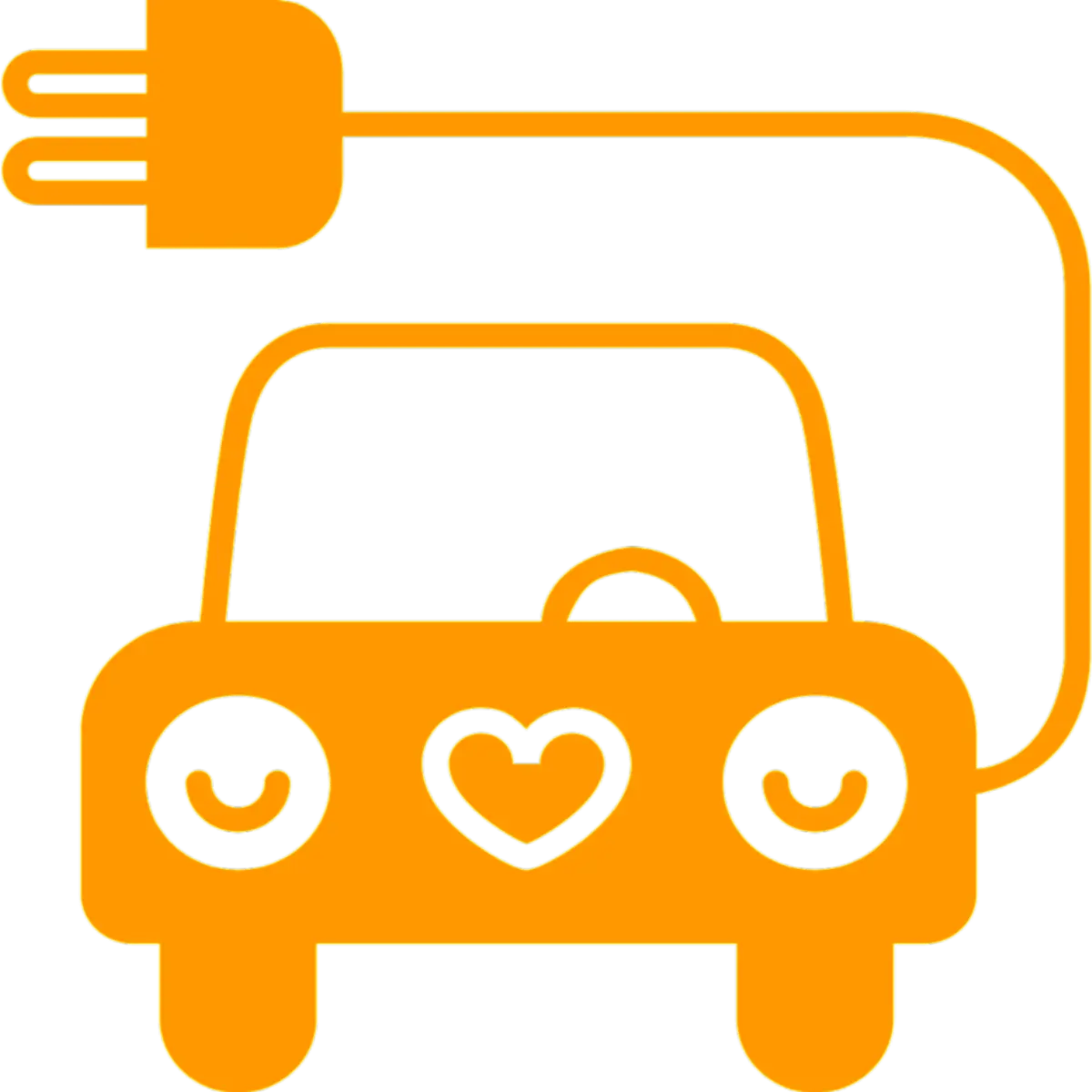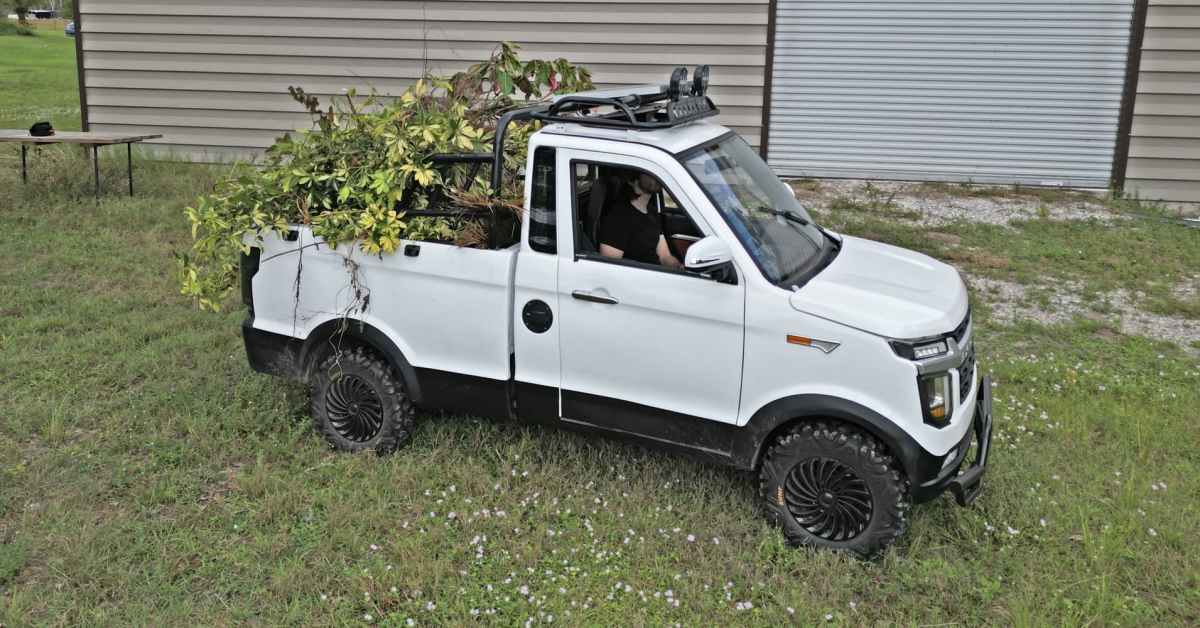This is why the US now has a 100% tariff on Chinese EV’s. American auto makers have no interest in affordable vehicles (Electric or otherwise) and the mere existence of these reliable yet affordable vehicles presents an existential threat to US auto makers thick profit margins. US leaders from any political party care more for share holders than the needs of the common people. That’s 100% fact.
I’m surprised there’s not at least one US based company making a small, ultra barebones EV thing like this yet. Something that could replace a lot of side-by-sides and ATVs on farms like this thing can, while also being able to get groceries. Surely there’s enough off the shelf parts to wrangle something up? Only major custom part would be the frame. If it was under 10k (ideally 5 or 6, I figure), I feel like they would sell like hotcakes.
Something like a Microlina, but even more basic, and maybe a little more utility-vehicle shaped, like a Kei truck.
They’re called Utility Transport Vehicles and they’re priced in the $15k to $30k range. China subsidizes a lot of the manufacturing of electric vehicles and PV panels and still has a large advantage in labor costs over North American manufacturing of the same. There’s no realistic way to complete with those advantages. So the question becomes, should NAFTA members subsidize the same or should the North American population be given the benefit of Chinese subsidies in the form of cheap utility vehicles or do they protect the North American manufacturing industry by keeping high tarrifs in place?
Interesting. This one came up with that search, which even then seems a little too deluxe compared to what I had in mind, but it’s not too far off. The price on those are insane, all the things considered, especially since the actually good batteries cost an extra 5k over the base price.
I think part of the high cost may be due to these manufacturers targeting companies, not private individuals, but I can see how it would be difficult to compete with subsidies and slave wages regardless.
Personally I’d support subsidizing it, but I doubt that’ll happen.
Personally I’d support subsidizing it, but I doubt that’ll happen.
A lot of us in this community probably thinking the same thing. Unfortunately the subsidies in place are written for the benefit of the large manufacturers to sell SUV and Pickup EVs only.
The one you linked was started by a subsidiary of GM (hence the name GEM), but it has since been sold off.
I think a company like Ryobi or Ego could do it. They both make a very good battery powered riding mower, and Ego already makes a dirt bike that uses the same batteries.
This is an ill informed question, only asking because you’ve shared two different brands I recognize…
How does GreenJoe or Worx stack up against Ryobi or Ego; as far small EV vehicle prospects go?
Trying to pay better attention to companies producing battery powered yard/farm equipment. Guess I’m trying to sort out which brands to pay attention to.
For GreenJoe or Worx, I don’t think either have any prospects. Greenworks already has commercially available UTVs, but they’re quite pricey.
Vehicle safety regulations in place prevent this.
It’s why domestic as well as Japanese cars have gotten so oversized and compared to 20 years ago.
It’s also why every car on the road looks alike. Automotive design is very restricted by regulation. They start with what they are “allowed” to make and have to work within the standards.
Cars have become oversized in the US because that’s what American consumers want and for no other reason. Somehow cars like the Mazda Miata, BMW Mini Cooper and the Kia Soul were able to pass US safety standards so there is no reason to believe it can’t be done with other small cars. Ford has stated they no longer will produce cars and instead focus on its more profitable SUVs and Trucks with the exception of its Mustang line. They don’t want to build smaller affordable cars because the profit margins on those cars are not worth it to them. If American auto makers refuse to build cars all Americans can afford then we shouldn’t protect their profits from companies who are willing to make those cars.
Right. Visibility got uniformly worse in every car because we only relatively recently mandated that cars be able to support their own weight on their roof. Therefore all pillars had to get thicker.
Well, make smaller cars - pillars won’t need to be as thick…
This is at least partially not 100% fact.
You can’t just put a lump of metal with an electric motor on the road. Safety requirements are necessary to not kill people you either hit or when it’s crashed.
Getting approvals costs a lot of money. You can bet this thing has never had a crash test.
That doesn’t explain why the Trump administration placed a 25% tariff on Chinese electric vehicles or why the Biden administration raised that to 100%. In order for a Chinese vehicle to meet those standards they have to do it for half the cost to compete with an equivalent American EV that would sell for the same price. Just like all domestic and import vehicles they would have to meet US safety standards but unlike Japan or Europe they have an artifical handicap placed on them to prevent competition. That’s the issue here.
I really think one of these would do less damage to a pedestrian than a Dodge ram or f150. And as long as the owners/occupants know they’re only getting the protection level of a golf cart I’m fine with them.
it’s not all about how much damage they can do, but also about how much they can protect the occupants: someone in a kei truck getting hit by a current f150 is more likely to die than getting hit by another reasonably-sized vehicle.
first step, though, is lowering speed limits across the board. i truly believe this is the first necessary step towards rehabilitating the US’s deranged auto-centric culture.
That’s true of sedans and hatchbacks too though. Any reasonably sized car is unsafe while sharing the road with the giant trucks and SUVs they’re making to skirt around emissions requirements. I know Kei trucks in particular further lack crumple zones and other protections, but they’re otherwise so practical I wish there was a way to get them approved. Not every vehicle should be built to double as a daily driver.
My long-term dream is a much less car-dependant society, where most people have access to public transit and vehicles like this are there for actual truck purposes.
Speed limits would be a nice change, if only because they could reduce the endless campaign to expand roads to make them safer at higher and higher speeds, but I think it’d be an endless, contentious fight with very little to prevent people (who’ve spent their whole lives dependant on cars for anything they need) from changing them back. I have been impressed with my city for gradually narrowing it’s streets and converting lanes into restaurant space, bike lanes, and I think parks.
Fun fact, “jersey barriers” have become ineffective for many of the SUVs and Pickup trucks on the roads in the USA due to the size of those vehicles.
That isn’t necessarily a problem for people who need vehicles which, as the article stated, are meant to just be used around farms/ranches and replace other equipment.
It’s hard to compete against Chinese labor costs and the Chinese subsidized battery industry. Western automakers have to buy Chinese batteries with a massive markup while these Chinese automakers can buy them below cost because of the subsidies.
Either we choose to let these cheap cars on the market so we electrify quicker but at the cost of destroying the local auto industry or we protect an entire industry but electrify slower. It happened in the solar panel industry. The flood of cheap Chinese solar panels meant that panels became affordable for more people but western solar manufacturers are basically non-existent nowadays. You probably think “Who cares?” But COVID has shown what Chinese dependency can do to our economy if another global disaster strikes. Also the more we depend on China the less likely our politicians are willing to put pressure on them when Xi will eventually initiate his plan to take over Taiwan and the South China Sea.
And scientifically we will fall behind when their is no industry to fund research anymore.
It’s hard to compete because our government doesn’t want to do what it takes in order to incentivize competition.
The Chinese subsidizes the market? So should the U.S. Oh, but it costs billions per year? Oh no, no, we can’t do that… that would make a dent on the tens of billions spend every year on military stuff.
So glad to see the follow up. I remember reading this guy’s post when he originally bought it.
deleted by creator
Wonder what justification they give for turning back vehicles at the port. Seems like at that point a lawyer might be worth it.





